Custom Thermoforming Services by Xometry
Xometry offers custom thermoforming services in a variety of types and materials. Our custom thermoforming process allows customers to choose from custom vacuum forming, pressure forming, mechanical forming, and other operations to achieve the highest quality custom thermoformed product for your needs. Xometry offers a wide selection of materials including thermoplastics like PETG, HIPS, HDPE, PC/ABS, and custom materials. Thermoforming is used throughout nearly every industry, but finds many uses in medical, automotive, aerospace, consturction, and food service markets as both general products and specialized equipment.
What is Thermoforming?
Thermoforming is a process in which a thermoplastic sheet is heated to its forming temperature and placed within a mold or die set, where it is formed into the desired part shape. After molding (referred to sometimes as “pressing”), the part is cooled and cut from the remaining stock, leaving behind a 3D plastic product. The method of forming varies, where thermoforming is generally categorized into vacuum forming, pressure forming, and mechanical forming. In vacuum forming, heated plastic is placed over a mold and then placed into a vacuum chamber, where the lack of air draws the plastic down into the mold and forms the part. Pressure forming is essentially the reverse process, where plastic sheet is forced into a mold or die via pressurized air. Mechanical forming implements two molds which sandwich the plastic sheet, providing contours on both sides of the material by applying mechanical force to each side. Mechanical forming allows for precise tolerances and more complex geometry, at the cost of requiring a press with sufficient tonnage.
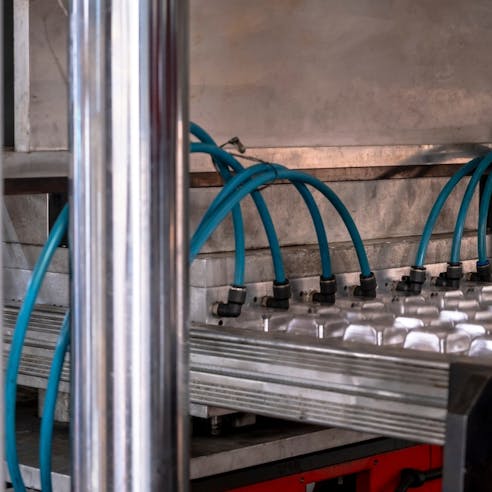
Benefits of Thermoforming Plastic
Custom plastic thermoforming has key benefits over other plastic forming processes like injection molding.
- Cost & Time Efficiency
- Material & Design Flexibility
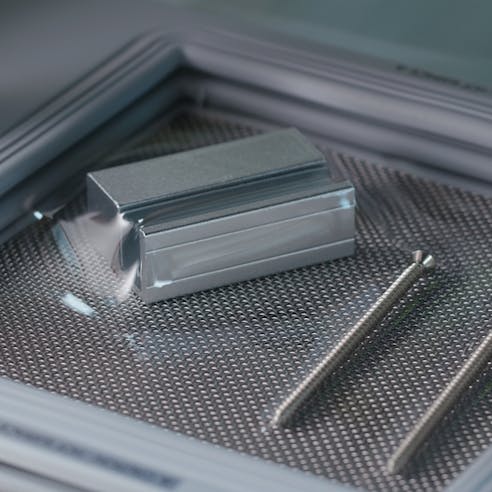
Cost & Time Efficiency
Thermoforming molds are much cheaper than injection molding molds, especially when sizing up parts and for low-volume production runs. The thermoforming process is also fast, allowing designers to quickly produce parts in large quantities within the same workday.
Material & Design Flexibility
Thermoforming can be accomplish with a wide range of plastic materials, giving designers an advantage over other material-dependent processes. Thermoforming also allows for complex shapes, both heavy gauge and thin wall designs, and designs with large voids. Operators can also quickly modify designs without needing to retool (in some instances).
Types of Thermoforming
- Vacuum Forming
- Pressure Forming
- Mechanical Forming
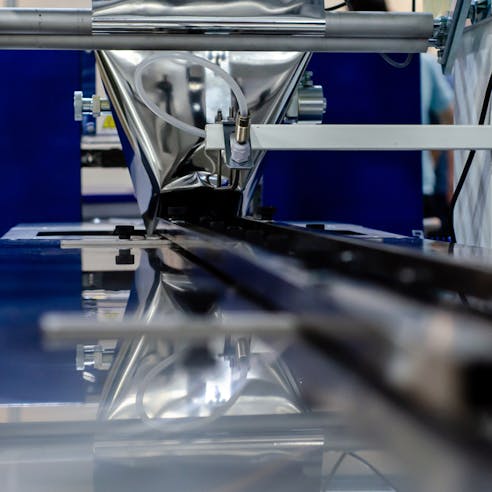
Vacuum Forming
In vacuum forming, a vacuum is pulled between the plastic sheet and a half mold (known as an open mold), forcing the sheet to conform to shape. Vacuum forming is one of the most simple thermoforming methods and is regularly implemented for food containers, packages, electronic housings, and other parts that only require one-sided forming.
Pressure Forming
In pressure forming, positive pressure is used alongside negative pressure to form plastic. Air pressure is supplied into one side of the sheeting while vacuum is applied to the other side, causing the plastic to form to the half mold’s shape more precisely. Pressure forming is great for complex shapes and projects wanting tighter tolerances than vacuum forming but requires an airtight mold and a compression source.
Mechanical Forming
as its name suggests, mechanical force is applied to shape plastic sheet. A positive mold presses a plastic sheet into a fitting negative mold, providing contours on both sides of the plastic and requiring no pressure or vacuum (but requires a mechanical press). Mechanical thermoforming offers great thickness control and surface detailing, at the price of upkeeping two molds and requiring a pressing machine.
Ready to make custom thermoformed parts?
Thermoforming Materials
- ABS
- PC/ABS
- HDPE
- TPO
- HIPS
- PVC
- Acrylic (PMMA)
- PETG
- Polypropylene
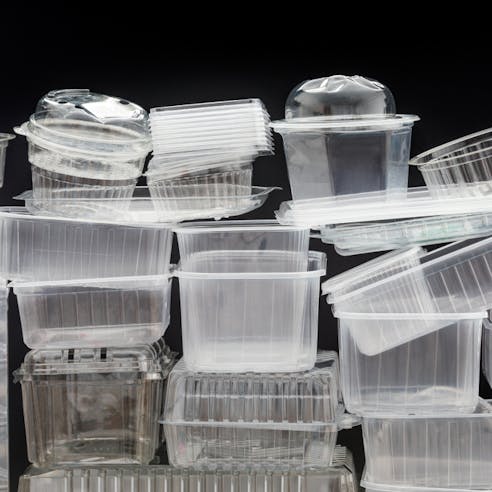
- ABS: acylonitrile butadiene styrene (ABS) is a common plastic built from two different thermoplastics and a elastomer material. ABS is commonly used in a variety of applications such as toys, aesthetic parts, and other general-purpose applications, as it is scratch resistant and can achieve an attractive glossy finish.
- PC/ABS: Polycarbonate ABS (PC/ABS) is a blend of the two common plastics PC and ABS that provides the advantages of each in one material, namely PC’s heat resistance and ABS’s impact resistance. PC/ABS can replace either material in application and is readily used in injection molding processes.
- HDPE: high density polyethylene (HDPE) is a strong, lightweight, and flexible thermoplastic used in the production of milk jugs, detergent bottles, drainage pipes, and other applications where durability is of key importance.
- TPO: thermoplastic polyolefin (TPO) is a thermoplastic alternative to composites like fiberglass, where polymers (typically polypropylene, polyethylene, and block copolymer polypropylene), elastomers (typically EDPM), and reinforcing fillers are blended into a durable and highly resistant material useful for outdoor and other demanding applications.
- HIPS: High impact polystyrene (HIPS) is a type of high-strength polystyrene mixed with rubber-like material to improve its durability, impact resistance, and workability. Its low price mixed with its great working properties make it ideal for packaging, consumer products, housings, paneling, and much more.
- PVC: polyvinyl chloride (PVC) is a common thermoplastic used in piping and tubing, as it resists most moisture and corrosion derived from organic sources.
- Acrylic (PMMA): Poly(methyl methacrylate) (PMMA, also known as acrylic) is an optically clear thermoplastic that is widely used as a non-shattering window alternative, for transparent components, and a variety of other uses. Being optically clearer than even glass and much easier to form and cut, acrylic is a highly versatile material used throughout industry.
- PETG: Polyethylene terephthalate glycol is a thermoplastic with impressive chemical and impact ressitances. Typically used for displays, insulators, medical devices, and other food-safe/non-toxic applications.
- Polypropylene: PP is a common thermoplastic used in a variety of general-purpose applications including consumer goods, packaging, living hinges, textiles, and much more.
Thermoforming Industries
Below are some examples of how custom plastic forming is utilized throughout nearly every industry to provide expedient, high quality parts.
- Medical & Pharmaceutical
- Automotive & Aerospace
- Construction
- Food Service
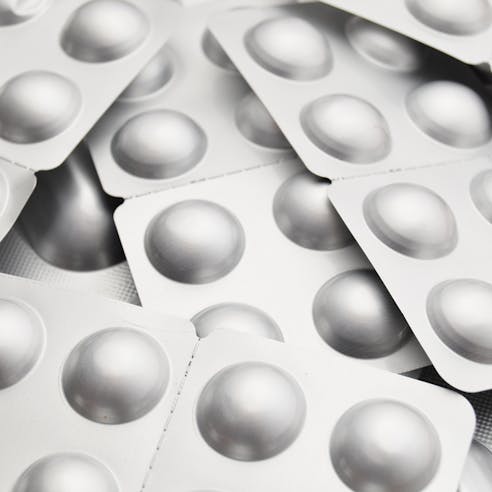
Medical & Pharmaceutical
Thermoforming with biocompatible plastics like PETG and others allow designers to create seamless, waterproof parts with enough complexity to meet the demanding geometries of implants and other medical devices. Xometry is ISO 13485 certified, meaning that our Quality and Management system is compliant with the safe manufacturing of medical devices, medical packaging, and other custom thermoformed products. Pharmaceuticals are also regularly packaged in blister packs and other thermoformed sterile packaging, keeping products airtight and clean until their use.
Automotive & Aerospace
Custom thermoforming for vehicles such as cars and planes means parts designed specifically to the application at hand, giving designers unmatched flexibility when creating components like windshields, windows, panels, internal components, and much more. Xometry’s ITAR registration and AS9100D certification ensures parts made with Xometry conform to the rigorous safety and quality standards of these fields and to government military regulations.
Construction
Thermoforming plastics for constructions allows builders to have a high volume of parts for their applications, as well as have access to cheap yet effective equipment. Both construction products and construction equipment benefit from thermoformed parts, being used for everything from shatter-proof windows to paneling to tool housings and even large assemblies. \
Food Service
Thermoforming is highly popular in the packaging industry as it provides an attractive means of showing off a product without expensive packaging design. Thermoforming is alos used to create parts in food service manufacturing which must be FDA compliant, food-safe, and non-toxic when exposed to a variety of organic chemicals.
Why Choose Xometry for Custom Thermoforming?

Endless Options
Choose from millions of possible combinations of materials, finishes, tolerances, markings, and certifications for your order.

Easy to Use
Get started with our easy-to-use platform and let our experts take care of managing the project from locating the right manufacturing partner to delivery logistics.

Vetted Network
We are ISO 9001:2015, ISO 13485, and AS9100D certified. Only the top shops that apply to become suppliers make it through our qualification process.